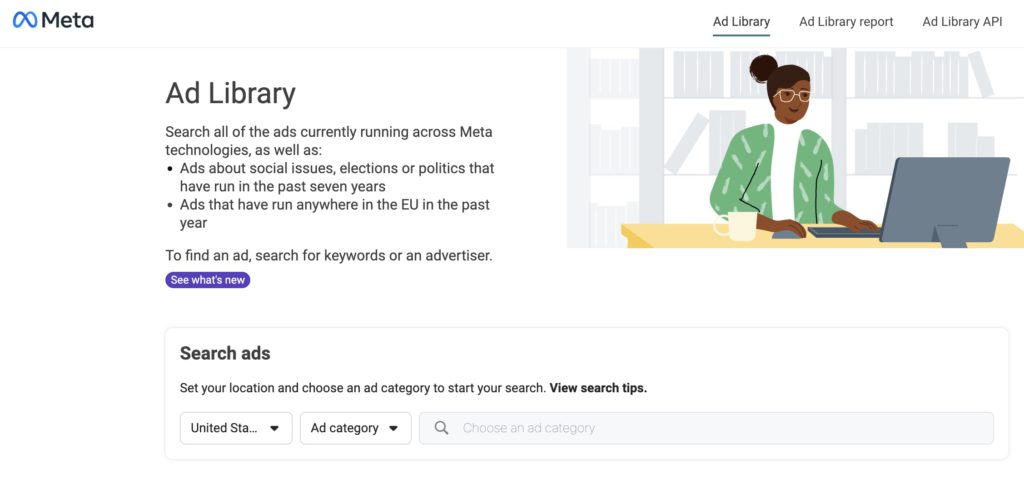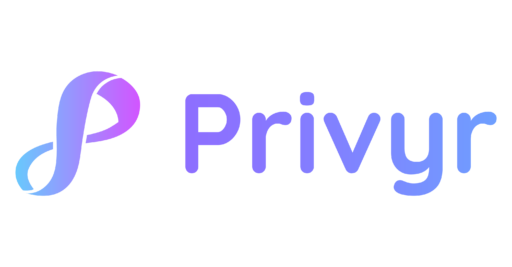Studying your competitor’s Facebook ads is crucial for improving your ad strategies, yet it’s often overlooked despite being surprisingly easy to do.
A thorough analysis your competitors’ Facebook ads can help you understand market trends, identify gaps in your own advertising strategy, and tailor your messaging to stand out and resonate with your target audience.
Finding out what messages they’re sending, who they’re targeting, and even how they design their ads can also be extremely useful to improve your own advertising strategies.
So how do you find your competitors’ Facebook Ads to gain insight into their marketing tactics?
Well, here’s some good news: Facebook allows you to view your competitor’s ads, along with some important information about them, all for free!
You can easily find your competitor’s Ads on Facebook through Facebook’s Ad library

Facebook’s Ad Library allows you to search for and view all active ads that are running across Facebook, Instagram, Messenger and Facebook Audience Network. This is where you can see the Facebook ads of your competitors.
Here’s how to see Facebook Ads of your competitors:
Step 1: Visit Facebook’s Ad Library
You can visit the Ad Library from your Facebook profile. If you find it hard to navigate, enter “Ad Library” into the search bar. The first result should redirect you to it.

Step 2: Use the search bar to look for your competitor
You can look for your competitor’s ad activities by entering their name on the search bar.
Let’s take “Zillow” as our example competitor.
You can filter by country if you are interested in location-specific ads.
You can also click on the “Ad category” dropdown to choose a competitor for that category. This options may vary according to the country you choose.
Step 3: Click on the Page name from the search results for a detailed page and ad information
At the top you’ll find overall competitor ads and information about the competitors Facebook page.
Under Ads section you’ll find approximate total Facebook ads of the competitor from the selected country and category.
Note: Facebook ad library doesn’t show all ads for the searched competitor.
Under About tab you’ll find more about the Facebook page such as,
- Facebook pages and Instagram accounts associated with the ads.
- Page history with information like page creation date, previous page merge, and page name changes.
- Organisations that manage the Facebook page and their address.
- Location of people managing the Facebook page.
Scroll down to see a list of active ads that the competitor Page is currently running.
You can also see details like when the ad started running, which platform it’s been advertised on (Facebook, Instagram, etc.), and additional information like ad spend and impressions.
Step 4: Click on each ad unit for more information
You can see more details of each ad by clicking on “See ad details“.
The details will open in a new pop-up window.
Ad detail view will show more information, including
- Ad status: (Active or Inactive)
- Ad start date: This will be really useful to understand the frequency of your competitor ads.
- Platforms: Indicates where your competitor is running ads (Facebook, Instagram, Messenger, Audience Network)
- Ad category: Shows your competitor’s category. In this case, Zillow belongs to Housing category.
- Facebook ad: Shows the Facebook ad with ad copy, creative, heading, CTA button and landing page URL.
Click on Filters for a more precise analysis.
You may also filter ads based on specific criteria like platform, impressions, or date range.
Some important elements you may want to check out
- Inactive ads: Check whether the Ad Library provides information on inactive ads. It may give you more historical context.
- Country specific: You can view ads targeting specific countries, which is helpful if your target market sits within a particular geographic area.
- Keyword search: Ad Library might also include a keyword search within a Page’s ads, allowing you to search for specific terms or products.
Benefits of analysing your competitor’s Ads on Facebook
Insights on your competitor’s ads can help you create a more effective, strategic, and targeted advertising campaign for your own business. Here’s a list of benefits you get from analysing your competitor’s ads.
Better strategic planning
Looking into your competitors’ ads helps you make informed strategies for your business by learning from the trial and errors of others.
Benchmarking
Analysis of your competitors’ ads allow you to compare your ads with theirs to see how yours stack up. This comparison can help you set a starting point or “baseline” for your advertising efforts. Below are some examples:
- Creative Approach: If your competitors are using video ads to generate engagement, it may be time for you to explore video content as well.
- Budget Allocation: If you notice your competitor is heavily investing in lead ads, you might want to reconsider your own budget to stay competitive.
- Ad Placements: Seeing where your competitors place their ads (e.g., Facebook news feed, Instagram stories, etc.) can help you decide where to place your own.
Identifying gaps
This means finding out where you are lacking compared to your competitors. Knowing these gaps helps you know exactly where you need to improve. Here are some examples of how identifying gaps help optimise your promotional strategies:
- If your competitor’s ads are getting more views and interactions, maybe you need to target a wider or different audience.
- If your competitors are running special promotions and you’re not, you might be missing out on attracting cost-sensitive customers.
- If competitor ads are more straightforward and easier to understand, you might need to simplify your own ads to better communicate your offer.
More creative insights
Understanding your competitors’ ads can also offer you a wealth of ideas to fuel your creativity when designing advertising campaigns. Here are some areas where you can gain inspiration:
Copy Inspiration
You can analyse the text your competitors use in their ads for ideas on how to write your own headlines, value propositions, and calls-to-action (CTAs).
- Headlines: If your competitors are using catchy headlines that grab even your attention, take note and brainstorm your own compelling headlines.
- Value propositions: If your competitors are offering discounts, free shipping, money-back guarantees, or other enticing deals, consider incorporating similar offers in your own ads.
- Calls-to-action: Observe the CTAs your competitors are using. Understand whether they are pushing for sales or more information, such as “Shop Now” or “Learn More”. This can give you ideas for effective CTAs to use in your ads.
Design Trends
A good analysis of competitor’s ads also allows you to notice the effective visual elements in your competitors’ ads. This can include colours, layouts, fonts, and more.
- Colours: If you notice that your competitors are using certain colours frequently, they may be worth trying in your own ad designs. But first, consider whether it’s aligned with your own branding.
- Layouts: The layout of the best performing ads of your competitors can help you make effective design decisions. Watch closely if your competitors are using a single-image layout or a carousel?
- Characters: If your competitors are using mascots or specific characters that resonate well with the audience, consider how you can incorporate similar elements into your own ads.
Pro tip: If designing ads feels too complicated, consider using a catalog maker or tools like Canva to simplify the process.
Audience targeting
Knowing who your competitors are targeting can help you make smarter choices for your own audience targeting. Here are some key areas you can look into:
Demographics
Demographics refer to characteristics like age, gender, income, and education level. If your competitors are targeting specific demographics, it may be a good idea for you to do the same. Here’s what you can look into:
- Age group: If your competitor’s ads seem to be aimed at young adults, you might want to consider targeting the same age group.
- Gender: If a competitor’s ads are more popular with a particular gender, that could be an audience you also want to focus on.
- Income level: If your competitor’s ads target a wealthier demographic, you may need to adjust your own targeting strategy accordingly.
Note that unless you’re from EU region, demographics information may not be available for your particular market.
Geographic Insights
Geographic insights involve understanding the locations that your competitors are focusing on, which can highlight areas that are worth targeting in your own campaigns. For instance:
- Local targeting: If your competitors are investing more effort towards targeting customers in a specific city or region, that could indicate a high-demand area.
- National vs. local: Understanding whether your competitors are targeting the whole country, or focusing on specific states or regions can guide your geographic targeting strategy.
- International markets: If your competitors are also targeting customers abroad, this might be an opportunity for you to expand your reach globally.
Messaging and positioning
Keeping proper track of how your competitors communicate their brand can help you craft your own effective messaging and positioning. Here are some key aspects to focus on:
Unique Selling Proposition (USP)
The Unique Selling Proposition (USP) is what makes a product or service stand out. By observing your competitors’ messaging, you can gain insights into how they position their USP, which can help you refine your own. Here are some areas you can look into:
- Product features: If your competitors highlight a particular feature as their main selling point, you may need to inspect whether your product has a similar or better feature to promote.
- Customer service: If a competitor is touting exceptional customer service as their USP, you might want to step up your own customer service game.
- Price point: If your competitor positions themselves as the affordable option, you’ll need to think about how your pricing compares and what makes your offer unique.
Promotions and Offers
Keeping an eye on what your competitors are offering can help you understand market expectations and standards. Here are some examples:
- Discounts: If your competitors frequently offer 20% off deals, customers might come to expect similar discounts from you.
- Bundles: If a competitor is offering a popular bundle deal, consider whether you can create a similar or better bundle to attract customers.
- Seasonal offers: If your competitors run promotions during specific seasons or holidays, it might be a good idea for you to plan your own special offers during those times.
Budgeting and scheduling
Understanding how your competitors allocate their advertising budget and schedule their campaigns can play a crucial role in your own planning. Here are key areas to focus on:
Ad frequency
Ad frequency refers to how often your competitors are running ads. By observing this, you can sense their advertising budget and the aggressiveness of their marketing strategies. Here are some examples:
- Daily Ads: If your competitors are running ads every day, they likely have a significant budget, and you may need to ramp up your own efforts to keep pace.
- Peak hours: If you notice that competitors usually run their ads during specific hours, this could indicate the times they’ve identified as most effective for reaching the audience.
- Campaign length: The duration of a competitor’s ad campaign can also tell you about their budget and strategy. Longer campaigns usually mean a bigger budget and a more sustained strategy. If an ad has been running for a long time, it probably means that it works well for your competitor.
Seasonal trends
Understanding the patterns where your competitors run specific ads during particular times of the year, like holidays or seasons, help you discover the high-demand periods you should be aware of. For instance:
- Holiday campaigns: If your competitors run special ads during holidays like Christmas or Black Friday, you might want to plan your own holiday promotions.
- Summer/winter sale: If competitors offer seasonal discounts, say during the summer or winter, consider running your own seasonal promotions.
- Event-driven ads: If your competitors advertise heavily around certain events, like back-to-school or major sporting events, this could indicate a profitable time to run your own ads.
Conclusion
You’ll gather a lot of valuable information after analysing your competitors’ ads. The next step is to revisit your strategy and possibly rework it if necessary. Also, don’t forget to A/B test and monitor the performance of your ads. The advertising landscape keeps changing, and what works today might not work tomorrow. Therefore, it’s important to continually adapt and evolve your advertising campaigns.
